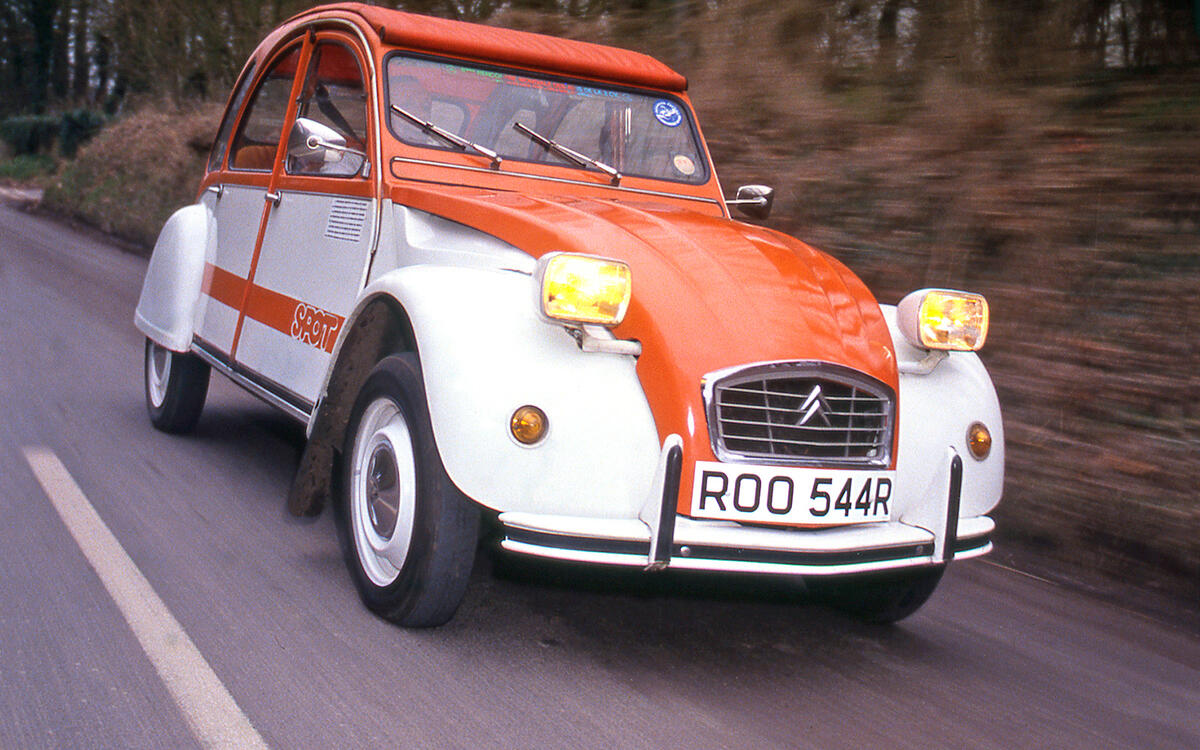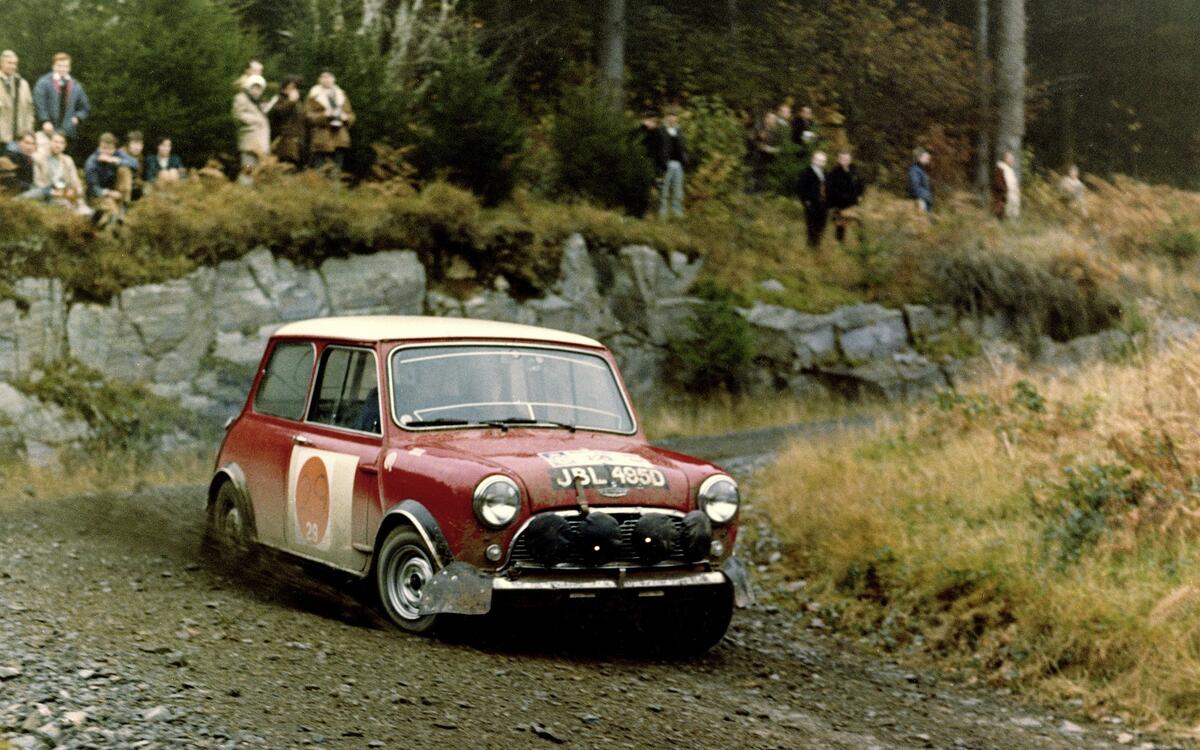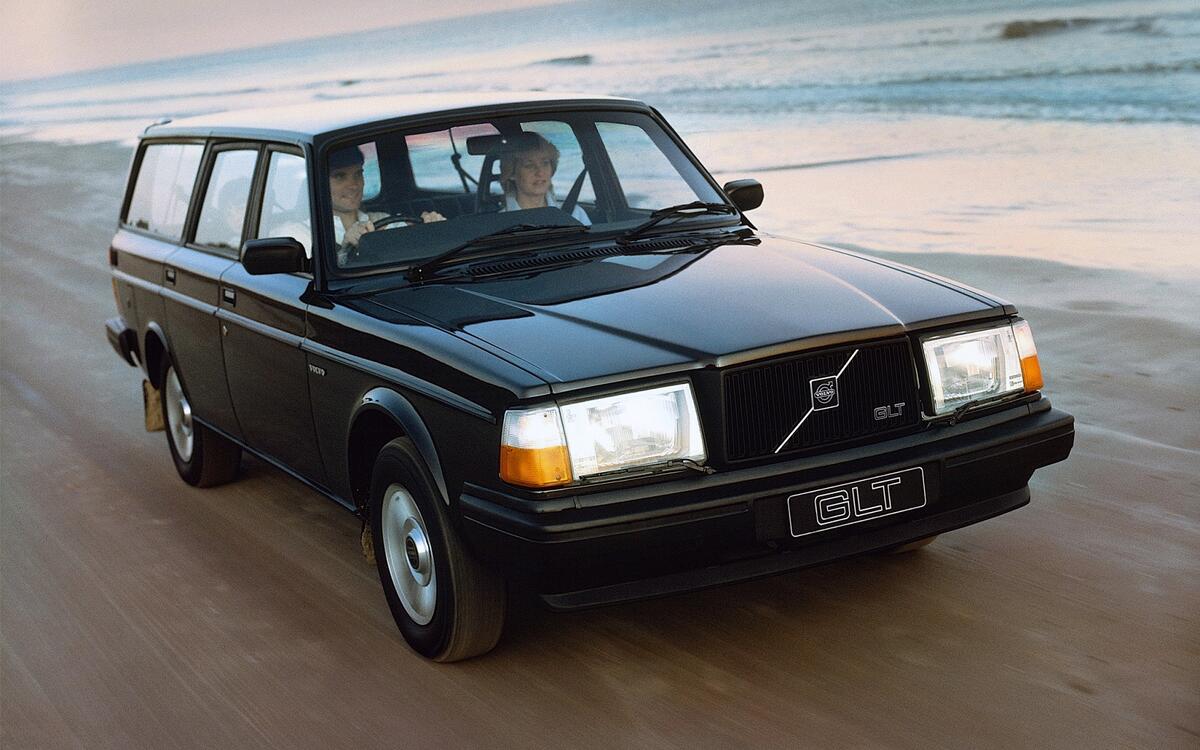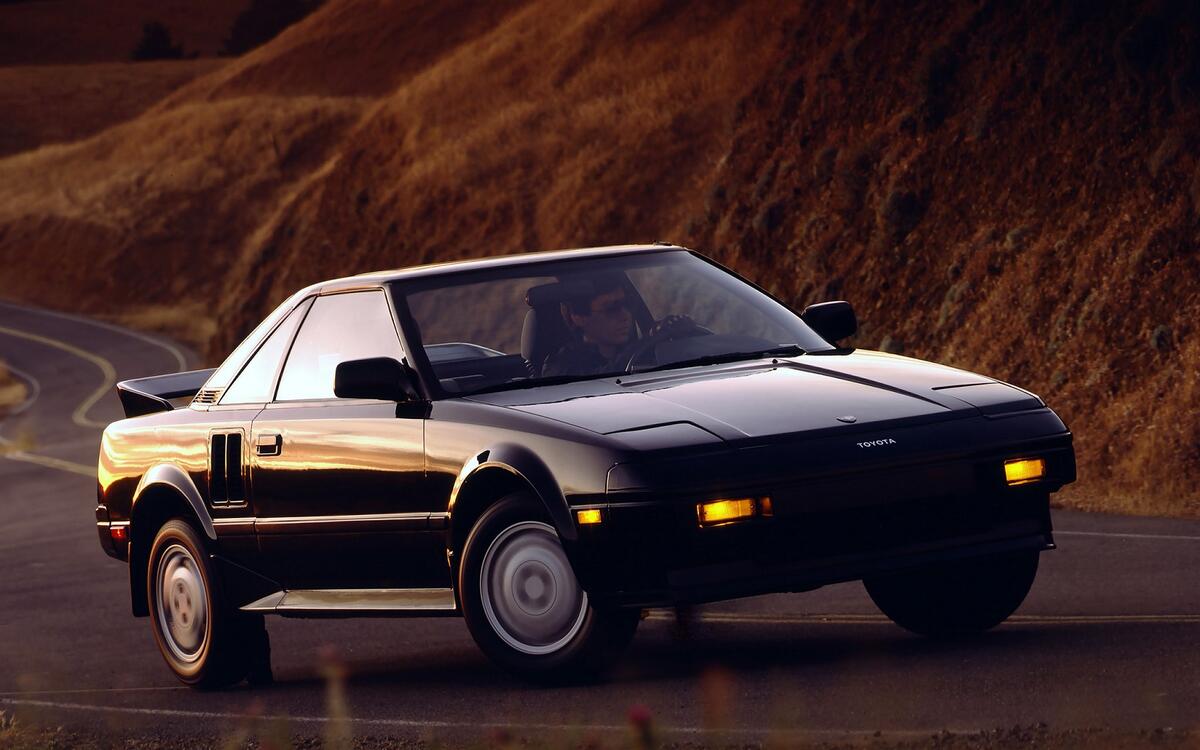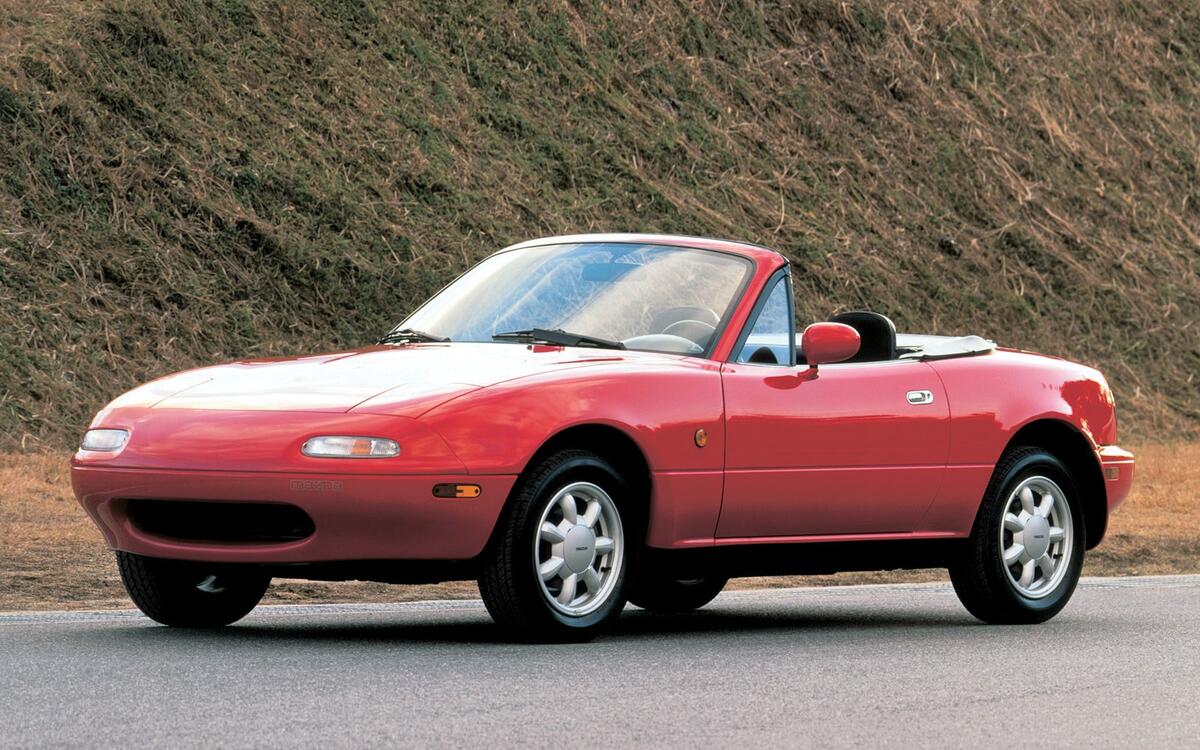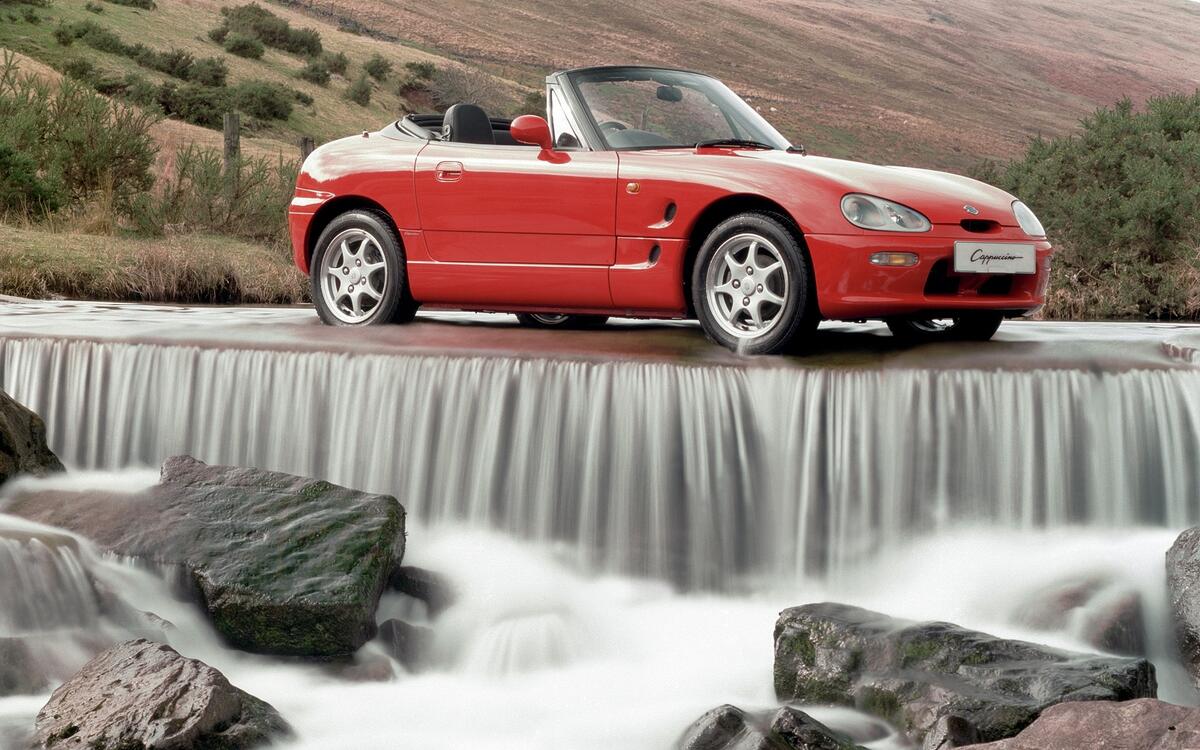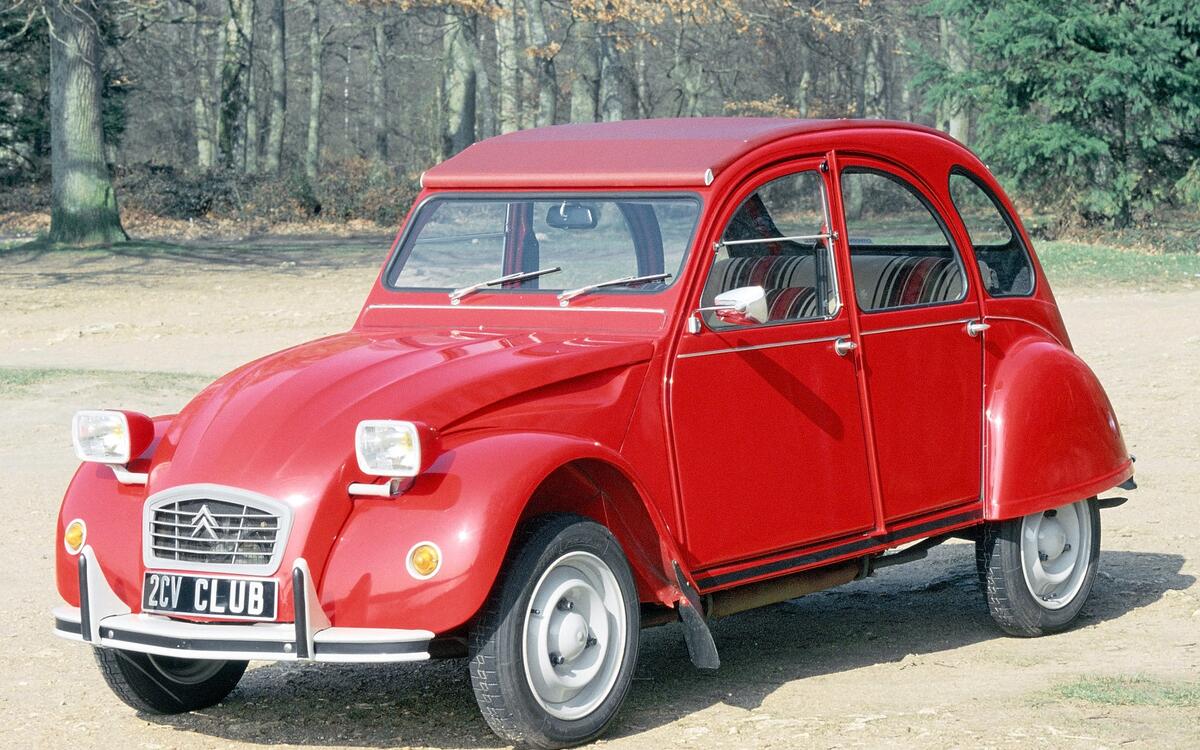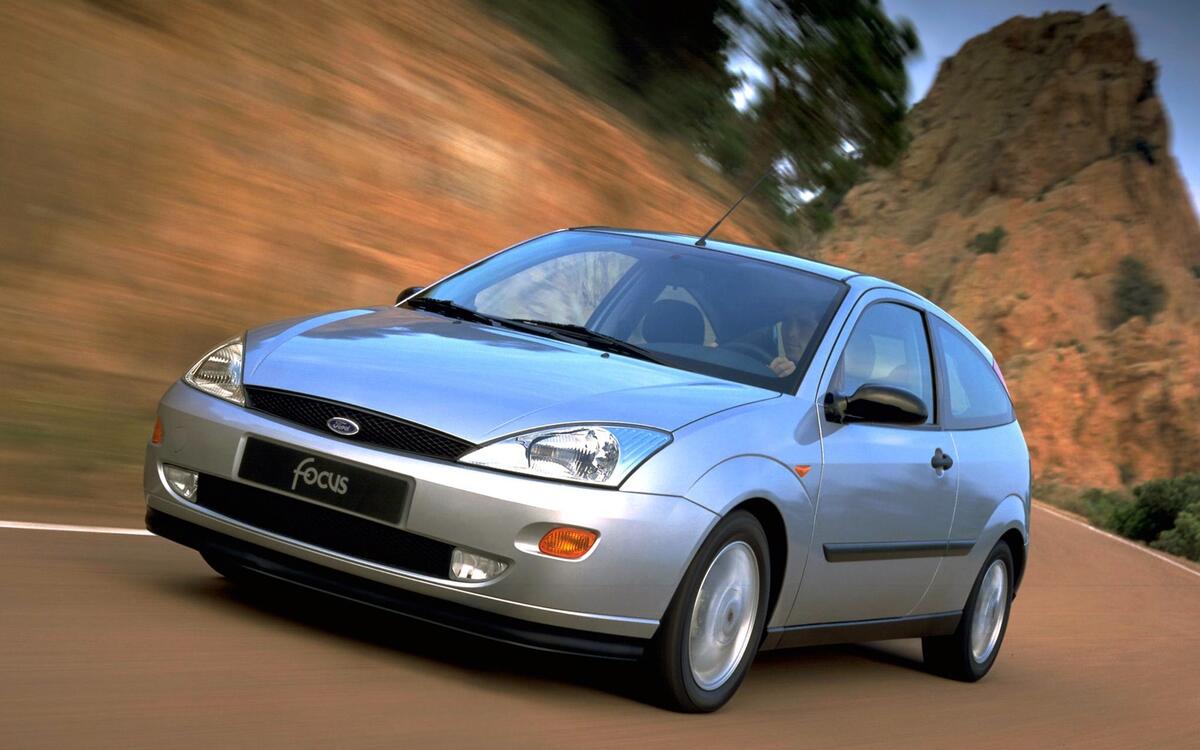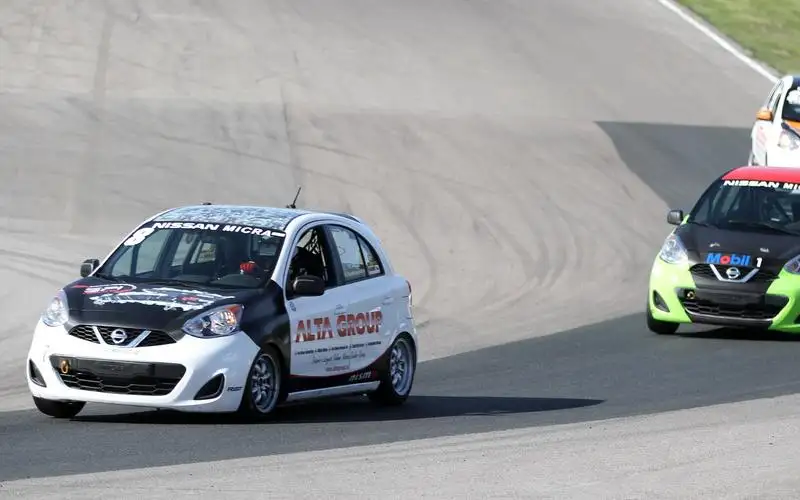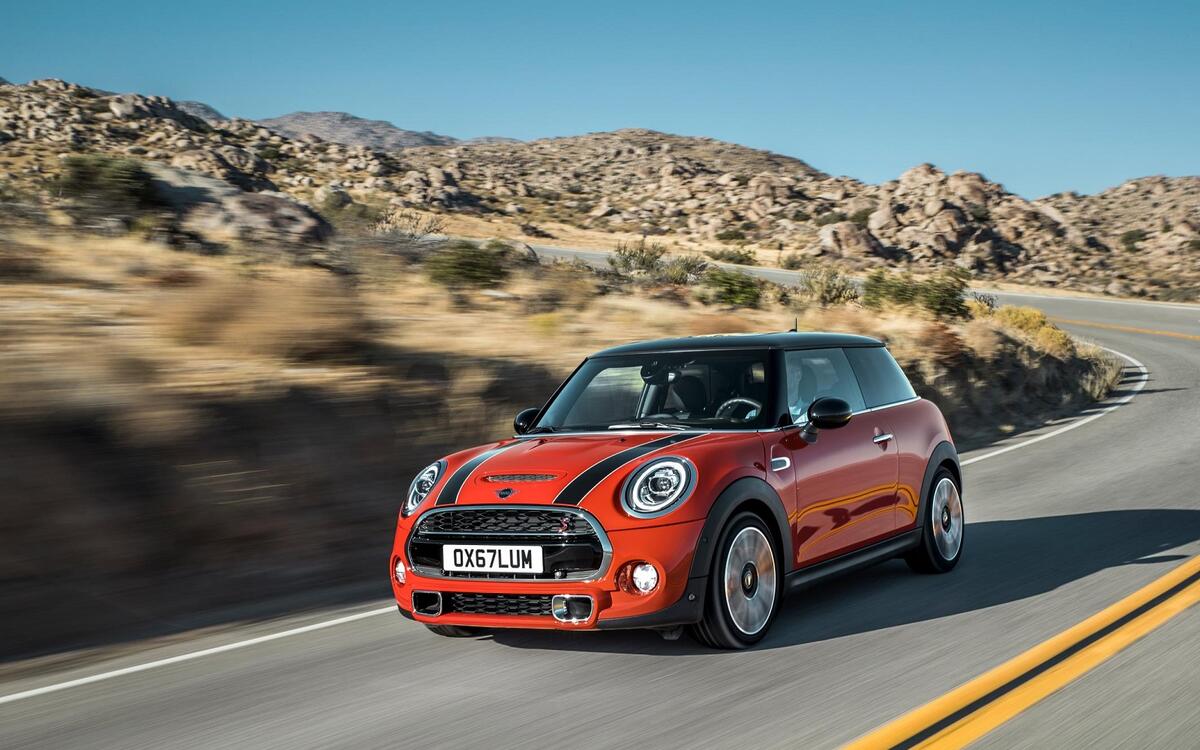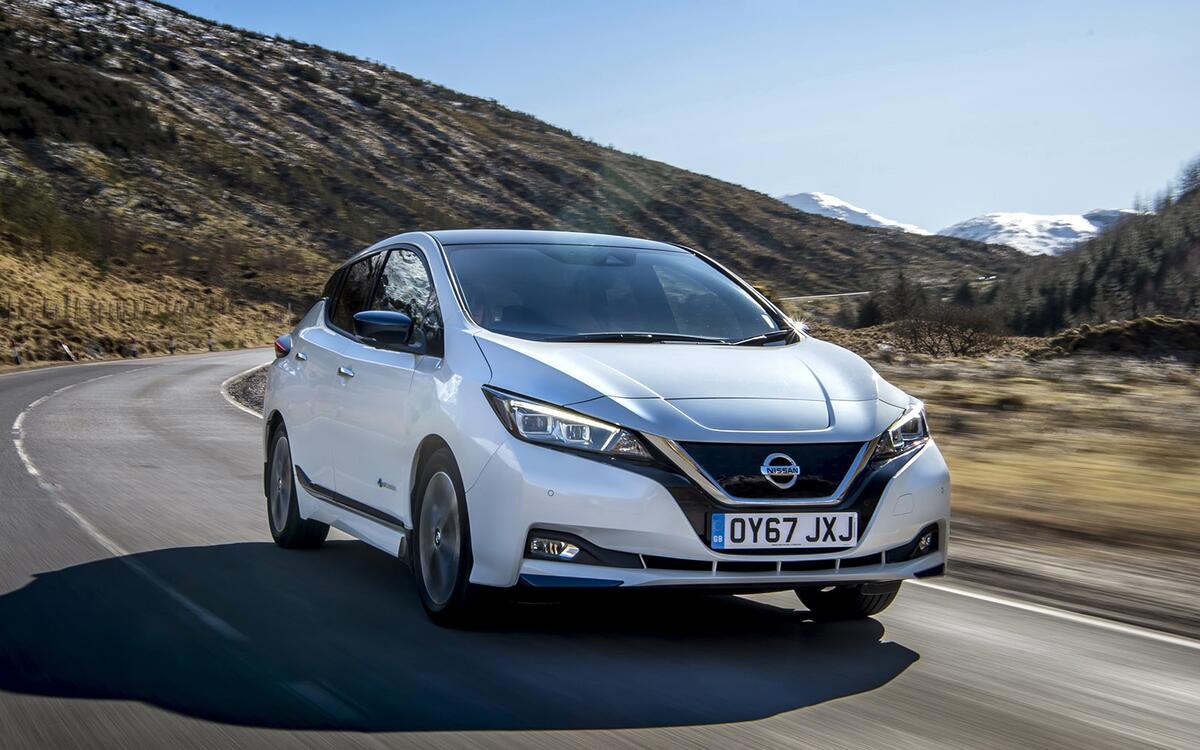 Slide of
Slide of
Quick, think of a fun car.
Odds are you just pictured a high-horsepower, high-end machine made by a company like Porsche or Lamborghini. Driving a sports car in the right conditions is one of the best motoring experiences you can have but you don’t need to take out a second mortgage to enjoy yourself behind the wheel. Indeed, there are few places where you can really enjoy the full performance of a modern high-powered sports car, and as a result driving them can be frustrating on many roads.
Instead, as the saying goes, it can often be more fun driving a slow car fast than a fast car slow. Join us for a look at some of the cars that defiantly argue driving fun isn’t linked to horsepower, displacement or acceleration times:
 Slide of
Slide of
Austin-Healey Sprite (1958)
Austin-Healey developed the original Sprite for sports car enthusiasts on a budget. It was always envisioned as an attainable convertible so it was priced – and powered – accordingly. Hidden behind its distinct, frogeye-like headlights was a 948cc four-cylinder engine borrowed from the Morris Minor and tuned to 43hp.
The Sprite certainly won’t win a drag race but the pure driving thrills it provides flawelessly illustrate what made British convertibles brilliant from the 1950s to the 1970s.
 Slide of
Slide of
Austin Mini (1959)
Like most of the cars on this list, the original Mini wasn’t designed to be sporty. It ended up that way almost by accident thanks to a cocktail of positive attributes like a low seating position, a low weight and a willing engine. It has never broken a quarter-mile record, at least not without major modifications, but the fact that it’s the car that inspired the term “go kart-like handling” speaks volumes about its fun-to-drive potential.
While the Cooper-tuned variant (pictured) is a true hot hatch with several Monte Carlo victories under its belt, even the basic, 34hp example will put a smile on your face after a few short seconds behind the wheel.
 Slide of
Slide of
Fiat 850 Spider (1965)
Fiat expanded the 850 line-up with the Bertone-designed Spider model at the 1965 Geneva motor show. It was marketed as a sportier alternative to the standard 850 and European-spec models consequently received a 49hp evolution of the 843cc four-cylinder engine to back up this claim.
While it wasn’t quick by any standard of measurement, it delivered an engaging driving experience that earned it the praise of enthusiasts. Period sales brochures even bragged about the Spider’s 90mph top speed.
 Slide of
Slide of
Volkswagen Golf (1974)
The Volkswagen GTI has been at – or near – the top of the hot hatch hierarchy since the first-generation model made its debut in 1975. However, even the standard Golf has almost always provided more smiles per mile than the competition thanks largely to a chassis tuned to provide confident handling regardless of what powers it and several variants (like the convertible, pictured) were developed with an eye on enjoyment.
The seventh-generation model sold in 2019 is no exception and we have high expectations for the upcoming eighth-generation model.
 Slide of
Slide of
Volvo 240 (1974)
Shaped like a shoebox, built like a tank and more reliable than a Swiss watch, the Volvo 240 has many positive attributes going for it. Speed, power and performance aren’t on the list (unless you find a sought-after turbocharged model) but this rear-wheel drive family car is still tons of fun to drive – especially if you’re on icy ground.
After a long career devoted to taking kids to boarding school, many 240s became drift cars that spend their winters sideways on a frozen lake in a remote part of Scandinavia.
 Slide of
Slide of
Toyota MR2 (1984)
Toyota began the MR2 project during the 1970s by exploring ways to marry engaging handling and economy car-like fuel consumption. It ticked the first box by placing the engine directly behind the passenger compartment. It fulfilled the second requirement by using a relatively small four-cylinder.
Released in 1984, the original MR2 shared some of its mechanical components with the humble Corolla but it delivered the kind of handling normally associated with much more exotic machines. American-spec cars came with 112hp though a supercharged four rated at 145hp later joined the line-up. The nameplate never strayed far from this formula over the course of three generations.
 Slide of
Slide of
Peugeot 205 XS (1986)
The GTI-badged variants of the Peugeot 205 are rightfully considered the best options for buyers seeking performance. They’re the quickest of the lot but the less powerful mid-range versions like the 80hp XS made from 1986 to 1992 offer a different kind of enjoyment that’s more accessible in terms of price and driving skill. You’ll reach the limits of the XS before getting close to the GTI’s but you’ll have just as much fun doing it.
 Slide of
Slide of
Mazda MX-5 Miata (1989)
Mazda engineers developed the original MX-5 Miata around the phrase jinba ittai. It means “rider and horse as one” in Japanese and, in this context, refers to a car that fits like a glove. Drive one on a twisty back road and you’ll watch with near-superstitious awe as the steering, the suspension and the chassis seemingly read your mind.
Unlike many of its rivals, Mazda has resisted the urge to make the Miata bigger, heavier and quicker over time. The fourth-generation model is still a small, light and balanced roadster powered by a four-cylinder engine that makes 181hp in its most powerful configuration. While many tuners have made the Miata faster by adding forced induction, cylinders or both, Mazda is happy sticking to the recipe that made the original model (pictured) a hit all over the world.
 Slide of
Slide of
Suzuki Cappuccino (1991)
Japan wrote its kei car regulations to lure motorists into smaller, cheaper and more efficient cars. Basic doesn’t have to mean slow, however. The Suzuki Cappuccino achieved kei car status, and it was closer to an economy car than to a grand tourer, but it offered a perfect 50/50 front-rear weight distribution thanks in part to a front-mid-mounted three-cylinder engine. While 63hp isn’t much, keep in mind the Cappuccino’s tiny dimensions allowed it to tip the scale at just 727kg (1600 lb).
 Slide of
Slide of
Citroën 2CV (1948-1990)
The last Citroën 2CV made in 1990 had about three times more power than the first model built in 1948. Put another way, the 2CV went on sale with 9hp and retired with 29hp. While its performance is measurable with a sundial, and its acceleration is lackadaisical at best in a straight line, the 2CV remains a blast to drive thanks in part to a unique suspension design that allows a tremendous – and, at times, alarming – amount of body roll while keeping the car firmly planted on its four wheels.
And, with such a modest horsepower rating, you can drive an early 2CV flat-out, with the pedal to the metal, while running a simple errand. No wonder there's a thriving 2CV racing scene in Europe.
 Slide of
Slide of
Peugeot 106 Rallye (1993)
Peugeot proved once and for all that a small engine dropped in the right chassis is often better than a big engine stuffed in the wrong chassis when it released the 205 Rallye in 1987. It elevated the Rallye nameplate to unprecedented heights by putting it on the back of the 106.
Introduced in 1993, the 100hp 106 Rallye wasn’t neck-snappingly quick off the line but it won the hearts of twisty road aficionados with its rev-happy engine (peak power comes at 7200rpm) and one of the best suspensions ever fitted to a city car.
 Slide of
Slide of
Ford Focus (first generation, 1998)
Ford stuffed the 1.6-liter engine it co-developed with Yamaha into the first-generation Focus to create a hatchback that struck an ideal balance between driving thrills and comfort. Part of the Zetec family, the 100hp four allowed the Focus to move briskly while remaining docile when needed.
 Slide of
Slide of
Ford StreetKa (2003)
If you drive a supercar, odds are you’ll often look down at the speedometer and notice you’re traveling at well over the posted speed limit. If you drive a 95hp Ford StreetKa, you’ll look at the instrument cluster and realize you’re under the limit – and yet, you’re having just as much fun.
Small, low and loud, the Pininfarina-built StreetKa is the kind of car that feels fast even when it’s traveling at a snail’s pace.
 Slide of
Slide of
Mazda 3 (2003)
Even in its slowest, most basic configuration, the Mazda 3 stands out from its rivals with handling that’s best described as sharp. Its steering has always been precise and well-weighted, which is exceedingly rare in its segment, and it feels much more balanced than its vocation as a cheap car to commute in suggests.
The newest version of the 3 is even better than its three predecessors. Autocar drove it in and around Los Angeles in early 2019 and concluded it drives with panache.
 Slide of
Slide of
Citroën C1 (2005)
Performance wasn’t even a consideration during the Citroën C1’s development process. It merely needed to be small, cheap and efficient, not quick. And yet, the C1 Racing Club founded by speed enthusiasts willing to think outside the box is becoming increasingly popular in Europe; Autocar’s own Matt Prior competed in the series and called it amazing fun.
Pilots bravely turn the C1 into an endurance race car by stripping the interior and making an array of suspension modifications but the 68hp engine remains 100% stock. Get comfortable; 0-60mph takes about 14sec.
 Slide of
Slide of
Nissan Micra (fourth generation, 2010)
On the surface, the fourth-generation Nissan Micra looks like the kind of car you buy with your brain, not your heart. In Canada, however, there is a small subset of Micra owners that purchased their car for the sole purpose of going racing.
The Nissan Micra Cup is hailed as one of the most affordable ways to hit the track. No modifications are made to the Micra’s 109hp engine but racers upgrade their car with firmer suspension components and a roll cage, among other add-ons.
 Slide of
Slide of
Morgan 3-Wheeler (2012)
The 82hp Morgan 3-Wheeler takes just 6 seconds to reach 60mph from a stop. That’s quick but not unusually so; there are dozens of cars in that range from all over the automotive spectrum. Some are soul-less; the 3-Wheeler isn't. We dare you to take one for a quick spin on a country road without smiling from ear to ear at least once.
It occupies the shady middle ground that separates cars from motorcycles and it entertains like no other machine can. The 3-Wheeler is one of the few cars that has received a five-star rating from Autocar’s reviewers.
 Slide of
Slide of
Toyota 86/Subaru BRZ (2012)
There is a good reason why Toyota and Subaru have doggedly refused to add a turbocharger to the GT-86/BRZ twins. Neither car needs one. The 205hp, 2.0-liter flat-four that powers them can handle more power but the coupes weren’t designed with jaw-dropping performance figures in mind. They’re for drivers who prefer a balanced chassis and razor-sharp handling over straight-line speed.
 Slide of
Slide of
MINI Hardtop (third generation, 2013)
It’s easy to argue the modern, BMW-designed Mini is only a shadow of its predecessor. It’s bigger, it’s heavier, it’s not nearly as basic and it’s generally much more expensive. And yet, even the entry-level model powered by a turbocharged three-cylinder engine rated at 134hp manages to proudly stand out as one of the most entertaining ways to get from A to B.
That's the most important trait it shares with its smaller predecessors; it wouldn't be worthy of the Mini badge if it didn't entertain.
 Slide of
Slide of
Nissan Leaf (second generation, 2017)
You wouldn’t find a single strand of sportiness if you put the Nissan Leaf’s DNA under a microscope. Its mission in life is all efficiency, all the time. However, it’s fun in the right conditions because its electric powertrain delivers an instant burst of torque right off the line and its bulky battery pack is mounted below the passenger compartment, which lowers its center of gravity.
We’d unquestionably take a 370Z over a Leaf if we were preparing to make a run up the Stelvio Pass but we’d also know how to have fun in Nissan’s quirky EV. That's why more than a few Leaf owners have competed in autocross events since the original model went on sale in 2010.
These cars prove having fun doesn't require jaw-dropping horsepower - they're all fun at any speed
Advertisement


